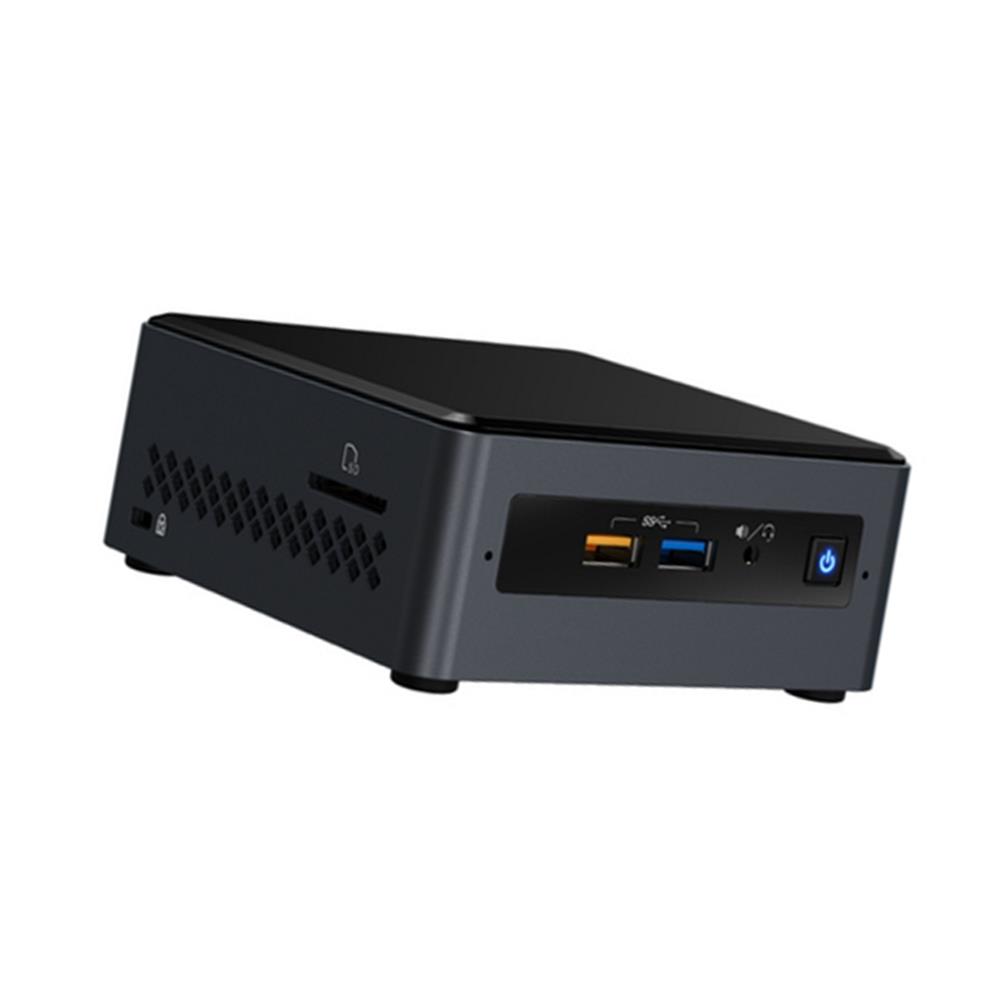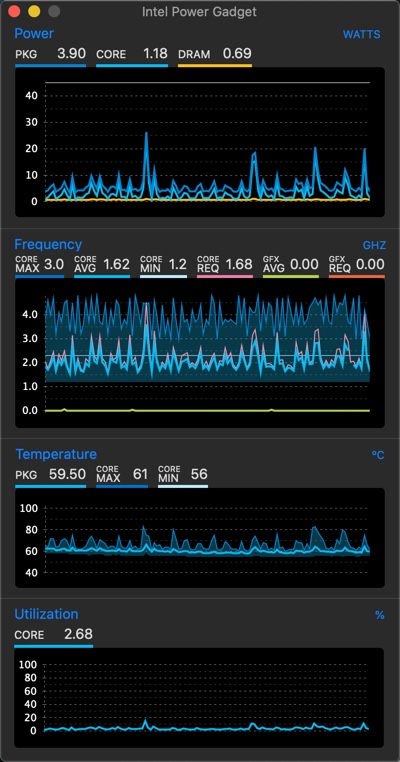

- #Intel power gadget ia gt driver#
- #Intel power gadget ia gt code#
- #Intel power gadget ia gt windows#

Since GT frequency is not obtained from MSRs, another function called GetGTFrequency() will provide this data. An MSR’s function, which the API obtains from GetMsrFunc(), determines the amount and meaning of data returned from GetPowerData() as described in Table 1. GetPowerData() is called for each sampled MSR and provides the relevant data from that MSR. The MSR ID is used to acquire data for a specific MSR using GetMsrName(),GetMsrFunc() and GetPowerData() functions. MSRs are given an ID from 0 to n-1, where n is the number returned by GetNumMsrs(). ReadSample() obtains the number of sampled MSRs from GetNumMsrs(). The ReadSample()function is used to read samples.

#Intel power gadget ia gt driver#
Here, the loading of the driver takes place. This library must be initialized at the start of the program by calling IntelEnergyLibInitialize(). 3.2 OverviewĪs the primary API, developers may use Intel® Power Gadget’s EnergyLib32.dll for 32-bit applications or EnergyLib64.dll for 64-bit applications. Although the Intel® Power Gadget API can be used with a sampling frequency ranging from 1 to 1000 milliseconds, the optimal sampling frequency of 100 milliseconds is the default selection on the GUI and is recommended for application developers. Higher the frequency, greater will be the accuracy of the data but poorer will be the performance of the system. Data is acquired from specific MSRs at a fixed sampling frequency.
#Intel power gadget ia gt code#
Sample code called “” to use Intel® Power Gadget’s DLL is available for download at the bottom of this page 3.API of Intel® Power Gadget 3.1 Concept of Samplingįor a good understanding of the API, it is essential to be familiar with the concept of sampling.
#Intel power gadget ia gt windows#
Intel® Power Gadget for Windows is an application which presents real-time data about a 2 nd generation or later Intel® Core processor regarding current estimated processor power, package power limit, current processor frequency, base frequency, GT frequency, current temperature, maximum temperature, proc hot (when package temperature exceeds max temperature) timestamps and elapsed time. Authors: Seung-Woo Kim, Joseph Jin-Sung Lee, Vardhan Dugar, Jun De Vega 1.Introduction 1.1 About Intel® Power Gadget for Windows


 0 kommentar(er)
0 kommentar(er)
